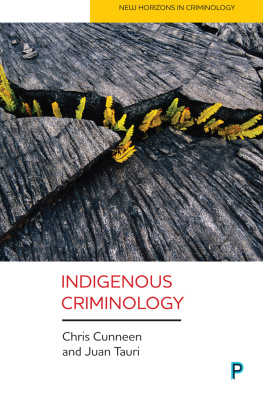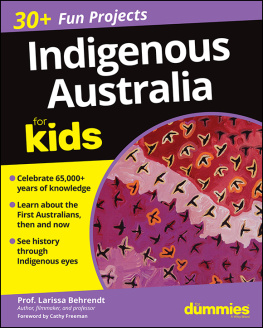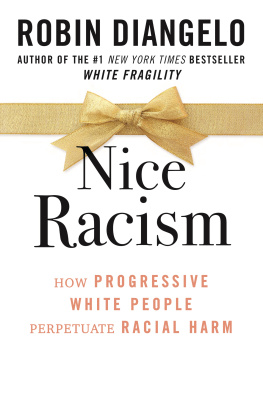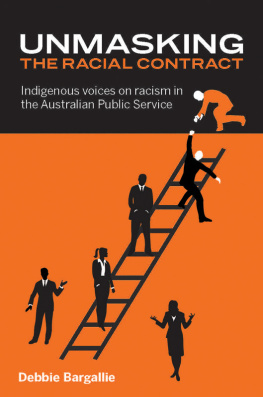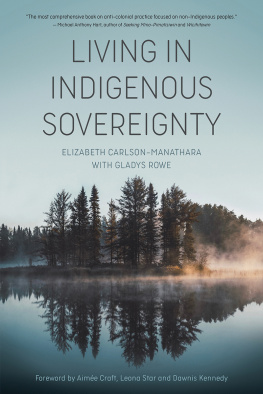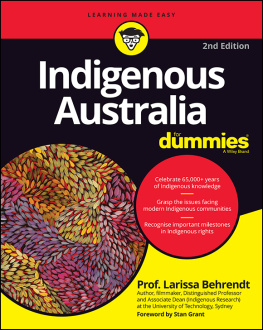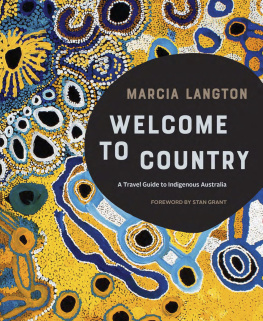Trapped in the Gap
TRAPPED IN THE GAP
Doing Good in Indigenous Australia
Emma Kowal

Published in 2015 by
Berghahn Books
www.berghahnbooks.com
2015 Emma Kowal
All rights reserved. Except for the quotation of short passages for the purposes of criticism and review, no part of this book may be reproduced in any form or by any means, electronic or mechanical, including photocopying, recording, or any information storage and retrieval system now known or to be invented, without written permission of the publisher.
Library of Congress Cataloging-in-Publication Data
Kowal, Emma.
Trapped in the gap : doing good in indigenous Australia / Emma Kowal.
pages cm
Includes bibliographical references and index.
ISBN 978-1-78238-599-8 (hardback) -- ISBN 978-1-78238-604-9 (paperback) -- ISBN 978-1-78238-600-1 (ebook)
1. Aboriginal Australians--Social conditions--21st century. 2. Aboriginal Australians--Services for. 3. Aboriginal Australians--Ethnic identity. 4. Whites--Australia--Attitudes. 5. Race awareness--Australia. 6. Australia--Race relations. I. Title.
DU124.S63K68 2015
362.849915--dc23
2014033556
British Library Cataloguing in Publication Data
A catalogue record for this book is available from the British Library
Printed on acid-free paper.
ISBN: 978-1-78238-599-8 hardback
ISBN: 978-1-78238-604-9 paperback
ISBN: 978-1-78238-600-1 ebook
To Yin, Maya and Eden, Sara, Ramona and Mandy.
Aboriginal and Torres Strait Islander readers are warned that this book may contain images of deceased persons.
CONTENTS
ILLUSTRATIONS
PREFACE
Youre an anthropologist and you study White people? I regularly receive a puzzled look from people when I tell them what I do. Anthropologists are supposed to study Indigenous tribes in remote locations, arent they? Or at least something exciting, like drug addicts or slum dwellers. When I explain further that I study White anti-racist people in Australia who work in Indigenous health, the confusion often dissipates. I see, so you look at their motivations for working with Indigenous people, they say, assuming that my goal is to question the motivations of White people and show that really they are racist. No, I dont look at their motivations exactly. I am more interested in what it means to identify as an anti-racist, and what this tells us about the whole project of helping Indigenous people. By this stage of the conversation, people either know exactly what I am talking about, or are more confused than ever.
Finding this object of study was the starting point of this book. It also marked the end point of ten-year journey that began at university in Melbourne in the early 1990s and ended in Darwin, four thousand kilometres and a world away. I was born and raised in Melbourne, the cosmopolitan Australian city, as the grandchild of four Jewish Holocaust survivors who fled rural Poland after the war. They worked in factories and sent their children to public schools where they excelled, went to university, and made the transition to the middle classes. I was brought up in an inner Melbourne suburb full of old White ladies and private schools. As I was a smart girl, good at maths and science, medicine was the obvious option, though I tempered it with a concurrent arts degree in history and anthropology. From the time I started at Melbourne University in the early 1990s, I was an activist, fighting against the introduction of university fees and for a free East Timor and womens rights. It seemed obvious to me that since I was so lucky, blessed with education and material security, I should devote my spare time and energy to helping those less fortunate the oppressed of this world whose suffering my privilege depended on.
I first became interested in Aboriginal justice issues in 1996 when I was in the national capital of Canberra to protest against budget cuts to the education sector by the conservative federal government led by John Howard. I was vaguely aware that the budget of the Aboriginal and Torres Strait Islander Commission (the government arm for Indigenous service delivery led by elected Indigenous leaders and later shut down by the Howard government) was also being cut. The day after the main protest at Parliament House was an Indigenous Day of Protest. A huge number and range of Indigenous groups participated from around the country. I was deeply affected by their stories. I decided then that the struggle for justice for Indigenous people was the primary struggle of this country. This became a kind of mantra, directing my energies away from other causes and into Indigenous activism.
I became involved in a newly formed Indigenous solidarity group on campus. Our work centred on educating non-Indigenous people about the history of colonisation and of Aboriginal resistance, issues in the contemporary Aboriginal community, and racism and the workings of Whiteness in our society. We collaborated with the local Koori community, and particularly with Kooris studying at Melbourne University. Near the end of my medical degree, I arranged to spend three months based at the Aboriginal community-controlled health centre at Utopia, a remote community in Central Australia. I loved the desert and the people there. I felt for the first time that I had found a medical job I could imagine myself doing a doctor in a remote Aboriginal community. As soon as I finished my medical degree, at the age of twenty-five, I bought a second-hand four-wheel drive and drove four thousand kilometres to Darwin to begin my internship at the Royal Darwin Hospital (RDH), the only public hospital in Darwin and the referral centre for all of the Northern Territory and neighbouring parts of Queensland and Western Australia.
I arrived in Darwin between Christmas and New Years Eve. Humidity was at its annual peak, and for three days I felt I was in a fog, unable to think of anything but the oppressive heat. I soon began work at RDH, where at least 60 per cent of the patients were Aboriginal, most of those from remote communities. The air-conditioned hospital was too cold for most of the Aboriginal patients, and the concreted area outside the main doors was always buzzing with life, with young kids running around and family groups sitting and talking in various Aboriginal languages, eating chips from the cafeteria and passing around cigarettes, with tubes and bags of bodily fluids protruding from hospital gowns.
During my last years of medical study I was drawn to prevention and public health, as it seemed the most effective way to improve the health of everyone, and a way to stem the massive flow of public money spent on overpriced drugs and diagnostic tests. Once someone sought medical attention it showed society had failed to improve the social conditions that made that person sick, and would make them sick again. It was clear to me that public health was where investments should be made.
It was not long after starting work in the hospital that I became interested in the Indigenous health research institute close by, the Darwin Institute of Indigenous Health. They held weekly meetings that many hospital staff attended, and I eagerly listened to tales of community health promotion projects where researchers supported local people to identify and resolve their own health priorities. Their presentations were littered with happy snaps of Indigenous people cheerfully participating in the research, kids playing up for the camera, island beaches, lily-strewn billabongs and damper roasting on the fire. In my personal journey of methodically applying myself to what I thought to be the most important cause in the most effective way, the Darwin Institute seemed the next logical step. Having trained as a doctor, Indigenous health was the most important area to work in; within Indigenous health, public health was the most effective way to improve health; and to ensure that public health methods worked as well as they could, we needed good quality public health research. I began infiltrating the institute, introducing myself to people after lunchtime meetings, having coffee with researchers after ward rounds, even learning a local Indigenous language in anticipation of remote community work. After a year of exhausting hospital work, I had lined up my first job at the institute as a public health researcher.
Next page

